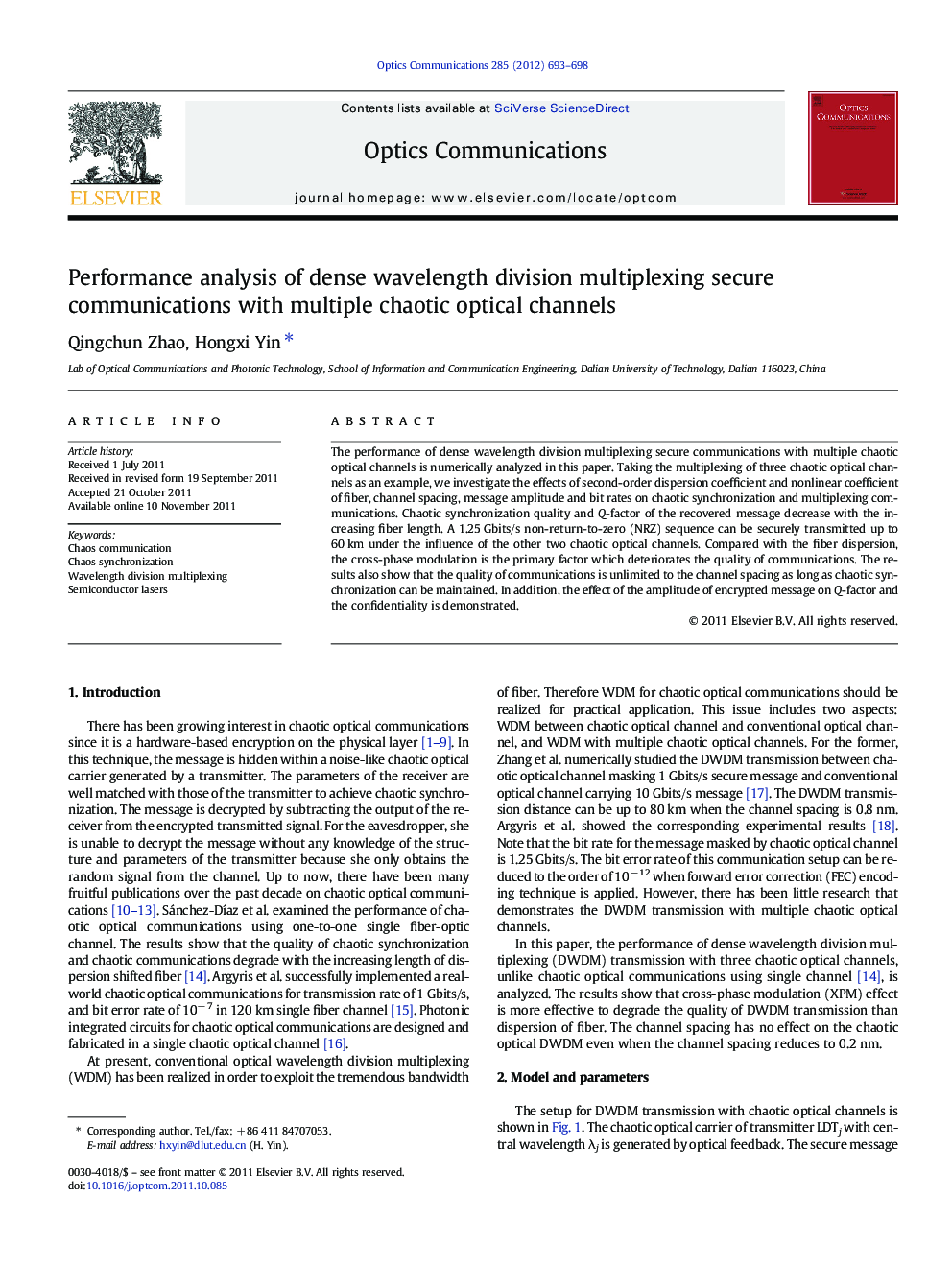| Article ID | Journal | Published Year | Pages | File Type |
|---|---|---|---|---|
| 1536738 | Optics Communications | 2012 | 6 Pages |
Abstract
The performance of dense wavelength division multiplexing secure communications with multiple chaotic optical channels is numerically analyzed in this paper. Taking the multiplexing of three chaotic optical channels as an example, we investigate the effects of second-order dispersion coefficient and nonlinear coefficient of fiber, channel spacing, message amplitude and bit rates on chaotic synchronization and multiplexing communications. Chaotic synchronization quality and Q-factor of the recovered message decrease with the increasing fiber length. A 1.25Â Gbits/s non-return-to-zero (NRZ) sequence can be securely transmitted up to 60Â km under the influence of the other two chaotic optical channels. Compared with the fiber dispersion, the cross-phase modulation is the primary factor which deteriorates the quality of communications. The results also show that the quality of communications is unlimited to the channel spacing as long as chaotic synchronization can be maintained. In addition, the effect of the amplitude of encrypted message on Q-factor and the confidentiality is demonstrated.
Keywords
Related Topics
Physical Sciences and Engineering
Materials Science
Electronic, Optical and Magnetic Materials
Authors
Qingchun Zhao, Hongxi Yin,
